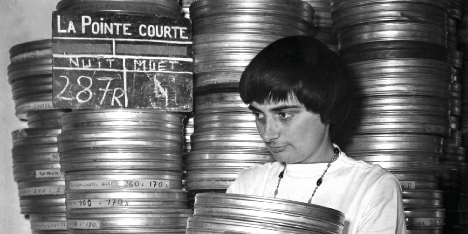Lucy's Response/Reflection
While watching Henri Langlois: The Phantom of the Cinémathèque and reflecting on our visit to the Cinémathèque today, I had a couple of disparate thoughts. As we discussed, Langlois was a giant of cinema even as his position remained precarious. It struck me while watching the film, especially when Langlois mentioned that he decided not to save Salomé, the random nature of the films that have survived. More than this though, I was surprised about the curated nature of the films that have survived. As Langlois explained, he chose films based on instinct and curiosity, and whatever didn’t make the cut faced probable destruction. This leads me to wonder how our sense of early film is shaped by those who decided to preserve the reels. In other words, how much is our understanding of early cinema shaped by Langlois’ understanding of early cinema?
In the film, the story of Buñuel’s El was recounted and how it faired miserably at Cannes but then was revived by Langlois. An emphasis was placed not just on Langlois’ significant role in the film’s history but also on the physical weight of the film itself. Buñuel carried all “55lbs” of it to Cannes and then to Paris. I’m fascinated by this concept of weight in the history of cinema and how it has made itself felt. It’s also intriguing to me that a longer film would have naturally weighed more. How has weight played a role in the history of cinema? And how has weight necessitated an expansion of that history?
In a lovely moment of alignment, I just discovered that it’s Agnès Varda’s birthday today. And here she is holding reels for La Pointe Courte, carrying some of its weight.

In the film, the story of Buñuel’s El was recounted and how it faired miserably at Cannes but then was revived by Langlois. An emphasis was placed not just on Langlois’ significant role in the film’s history but also on the physical weight of the film itself. Buñuel carried all “55lbs” of it to Cannes and then to Paris. I’m fascinated by this concept of weight in the history of cinema and how it has made itself felt. It’s also intriguing to me that a longer film would have naturally weighed more. How has weight played a role in the history of cinema? And how has weight necessitated an expansion of that history?
In a lovely moment of alignment, I just discovered that it’s Agnès Varda’s birthday today. And here she is holding reels for La Pointe Courte, carrying some of its weight.
